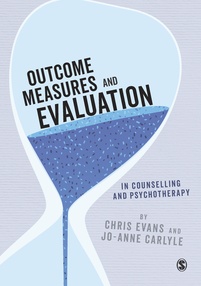Page created 23/5/15, largely rewritten 15/10/25.
Good question and one I had twice in fairly short succession back in 2015 that led to this FAQ. I am updating it (15/10/25) using the data from:
Brooks, Davies, & Twigg (2013). A measure for feelings—Using inclusive research to develop a tool for evaluating psychological therapy (Clinical Outcomes in routine evaluation—Learning disability). British Journal of Learning Disabilities, 41(4), 320–329. Scopus. https://doi.org/10.1111/bld.12020.
I was heavily involved in the development of the LD-CORE but didn’t do the statistical analyses for that paper. A recent request asking if there was any referential data (thanks Charlotte Farnsworth!) jogged my memory and I realised I had the data that led to that paper and Michelle and Stephanie were happy for me to analyse it to update this FAQ.
Reliable change between two scores for an individual client
The 232 help-seeking participants at the start of their therapies in that sample showed a Cronbach alpha value of .81 with 95% confidence interval from .77 to .84. So if you have say more than 20 clients in your own data and can work out the standard deviation (SD) of their scores then use my Reliable Change Index (RCI) calculator at https://shiny.psyctc.org/apps/RCI1/, put in your SD and .81 for the reliability and you will get the RCI for your data. You can see my explanation of the RCI at https://www.psyctc.org/psyctc/glossary2/reliable-change-index-rci/ and a more extensive explanation of it with some critique of the widespread overvaluation and misrepresentation of the RCI at https://www.psyctc.org/Rblog/posts/2025-05-27-rcicttmodel/. You could also put in that reliability, your SD and your dataset size into my other (https://shiny.psyctc.org/apps/RCI2/) app that will give you a plausibility interval around that RCI based on the confidence interval around your SD. See the Explanation/information tab in that app to get the explanation of that interval. Another way to get a plausiblity interval would be to use the first app and put in values of .77 and then .84 for reliability that would take into account uncertainty of estimation around the reliability but would ignore the uncertainty of estimation around your SD.
Doing that will tell you, for each client’s pair of scores, whether their change was so strong as to be categorised as “reliable improvement”, so bad as to be “reliable deterioration” or just “no reliable change”.
If you have more than two scores and putting the scores into context for and with the client
If you have more than two scores then clearly you can look at how they change over time for any client and hope to see them come down. You can also look at the responses on the risk items in the same way. If you are embedding the LD-CORE within the clinical work then high risk item scores (relative to the possible highest, and indicating fairly frequent risk) should be explored with whatever steps are appropriate for that client. I’d always start off by asking permission to discuss these a bit more and say they, and other things, suggest the person is in quite a lot of pain at the moment and that I hope together we can help that and that starts with really understanding a bit more. I.e. I’d be going what for me would be “the usual clinical” route. If possible, I’d be keen to have third party information. Any experienced clinician will have their own way of handling risk and scaling the level of problems and should integrate the LD-CORE into that rather than letting it (or any other instrument) damage good established ways of working.
That’s using the scores within clients. The other way I’d want to use the scores if I were working with people with LD would be to set up a simple spreadsheet so I could look at scores across my clients, e.g. to get a sense of the spread of scores at first contact (which will get you to your own SD) and to start to think about how the latest client’s score fits in that spread. I’d want to something similar for the spread of scores for sensible points later in your joint work (after a month, or three months: depends on the duration of your work) and I’d certainly want to look at scores at termination and at the spread of change from state to termination.
Ideally, I’d want to link that with other people working with similar clients or with scores from colleagues in the service.
As with all our FAQs: please use at your own risk, CST can take no responsibility for your work. However, of course we hope these FAQs prove useful. They can surely be improved and will evolve over time and particularly well if users send us feedback. Please contact me to tell me what you think. What’s wrong or doesn’t appeal to you? What can be improved?

